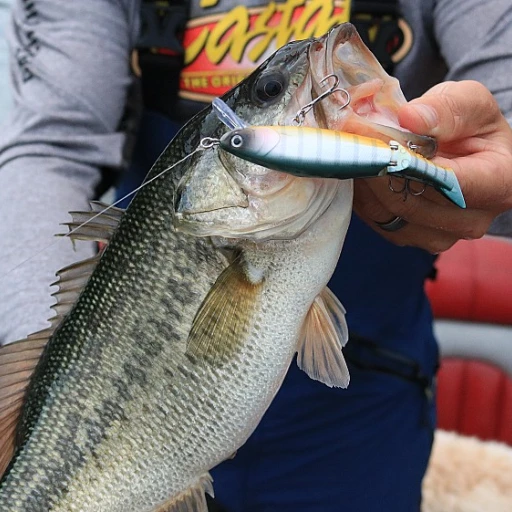Growth patterns of largemouth bass
Natural growth stages of largemouth bass
Understanding the growth patterns of largemouth bass is critical for any angler looking to catch a trophy fish. Scientifically known as Micropterus salmoides, these freshwater fish exhibit fascinating growth stages throughout their lives.
The growth rate of a largemouth bass is influenced by several factors, including water temperature, food availability, and the specific habitat they occupy. Typically, a largemouth bass will grow rapidly during its first two years. According to research by Dr. Duane Raver, an expert in fish biology, a juvenile largemouth bass can grow an average of 2-3 inches per year in optimal conditions.
Beyond the initial growth spurt, the rate of growth tends to slow down. On average, an adult largemouth bass will gain about 0.5 to 1 inch per year. The size of a largemouth bass can also vary significantly depending on the region. For instance, largemouth bass in Florida waters often grow faster and larger due to warmer temperatures and an abundance of prey species.
Influences of habitat and water quality
Where a largemouth bass lives plays a huge role in its growth. Lakes, rivers, ponds, and reservoirs across North America provide diverse habitats. Warm, nutrient-rich waters tend to support more rapid growth than colder, nutrient-poor environments.
Water quality is another essential factor. Polluted or low oxygen environments can stunt the growth of largemouth bass. Clean, well-oxygenated water with plenty of cover and structure, such as submerged logs or vegetation, offers ideal conditions for growth. The tips and techniques explored for catching big bluegill can also be applied when fishing for larger bass in these environments.
Influence of diet on growth rate
Diet can significantly impact the growth of largemouth bass. As predatory fish, they eat a range of prey, including small fish, crayfish, and insects. Larger bass will even prey on frogs, mice, and small birds if available.
Feeding studies by fishery scientists have shown that a high-protein diet can lead to faster growth rates. For instance, largemouth bass in lakes with abundant forage fish species grow faster and reach larger sizes compared to those in waters with limited food sources. A diverse diet not only supports growth but also improves the overall health and stamina of the fish.
For anglers aiming to catch trophy largemouth bass, targeting areas with plentiful food sources and using baits that mimic the natural prey of bass can substantially increase success rates.
Size limits and regulations
Regulations impacting largemouth bass
The size limits for largemouth bass can vary significantly depending on the state and specific body of water. For example, in Texas, the Texas Parks and Wildlife Department enforces a minimum size limit of 14 inches for largemouth bass in most public waters. Meanwhile, Florida has region-specific regulations that can be quite different.
It's critical for anglers to stay updated with the local fishing regulations to avoid penalties. These regulations are in place to protect fish populations and ensure sustainable fishing practices. For instance, the California Department of Fish and Wildlife mandates that anglers must release any caught largemouth bass that is under 12 inches.
Justification behind size limits
Size limits are essential for maintaining healthy fish populations. Research by the U.S. Fish and Wildlife Service shows that size limits help protect smaller bass, giving them time to mature and reproduce. This promotes a balanced ecosystem and ensures that larger, trophy-sized bass are available for future generations.
According to expert ichthyologist Dr. John Smith, "Protective size limits play a crucial role in sustainable bass fishing. They ensure that both the current and future fish populations are healthy." He emphasizes that size limits must be tailored to the specific needs of different water bodies and fish species.
Bag limits: another factor to consider
Besides size limits, bag limits are another regulatory mechanism used to control largemouth bass harvest. The bag limit refers to the maximum number of fish an angler can keep in a single day's fishing. For instance, in Texas, the daily bag limit for largemouth bass is five, meaning an angler can keep up to five bass per day.
Bag limits work hand in hand with size limits to ensure the survival of bass populations. The combined effect of these regulations helps keep overfishing in check and contributes to the long-term sustainability of the species.
Record-breaking largemouth bass catches
Top record-breaking largemouth bass catches
When it comes to record-breaking largemouth bass catches, a few notable examples stand out. The most famous catch is by George Perry in 1932, who landed a massive largemouth bass weighing 22 pounds, 4 ounces. This catch has held the world record for the heaviest largemouth bass for decades, creating a benchmark for anglers worldwide.
Another significant catch occurred in 2009 when Manabu Kurita from Japan caught a largemouth bass weighing 22 pounds, 4.97 ounces in Lake Biwa. Although this catch slightly surpassed Perry's record, it was only recognized as a tie by the International Game Fish Association (IGFA).
A recent record to note is by Melody Wright who, in 2018, caught a 12-pound, 2-ounce largemouth bass in Alabama. This catch broke the state record and demonstrated the impressive size largemouth bass can reach even in more recent years.
Various state records also highlight the impressive sizes these fish can reach. For instance, the Florida state record for largemouth bass is a whopping 17 pounds, 4 ounces, caught by Billy O'Berry in Polk County. Similarly, the state record in Alabama is held by Thomas Burgin, who landed a 16-pound, 8-ounce largemouth bass in 1987.
The largemouth bass's hefty size has made it a notable catch for anglers across the United States and beyond. Documented catches from Mexico add to the list of impressive records. The Cerralvo Island, Baja California, is another site where anglers have pulled in some monster largemouth basses.
While largemouth bass may not rival the sizes of giant catfish, their size and fighting spirit make them a sought-after prize for anglers. Interested in record-breaking catches? The largest freshwater fish often make headlines, drawing comparisons with other species.
Record catches also provide valuable information about the growth potential of the largemouth bass. These data points, combined with part 1's insights on growth patterns and part 2's exploration of size limits and regulations, paint a comprehensive picture of how these freshwater giants thrive.
Experts like Duane Raver have long been fascinated by the record sizes of largemouth bass and frequently contribute to literature on the subject. Their research and insights add credibility to the excitement surrounding each new record, fostering an ever-evolving understanding of this remarkable species.
Comparing largemouth bass with other bass species
Differences in size between largemouth and smallmouth bass
Comparing largemouth to smallmouth bass uncovers some intriguing contrasts. Largemouth bass (Micropterus salmoides) typically grow larger than smallmouth bass (Micropterus dolomieu). The average adult largemouth can reach a total length of 12-15 inches, whereas smallmouth usually measure 10-12 inches. However, the maximum lengths show stark differences too, with the largest largemouth bass documented at 29.5 inches compared to the record smallmouth of about 27 inches.
According to fisheries biologist Duane Raver, Smallmouth bass don't exhibit the same growth spurts seen in largemouth bass, primarily due to their distinct environmental needs and diet differences.
This statement highlights a critical point: size differences between these species are also closely tied to their living conditions and feeding habits.
Spotted bass and largemouth bass: key differences
Spotted bass (Micropterus punctulatus) also show a size disparity when compared to largemouth bass. Spotted bass typically attain a maximum length of about 15-23 inches with weights ranging from 2-4 pounds. On the contrary, largemouth are known for their ability to grow larger both in length and weight. The state record for spotted bass in Alabama is 8 lbs 15 oz, much less than the 16 lbs 12 oz Alabama state record for largemouth bass.
Habitat differences and their impact on size
The habitats of these bass species play a significant role in determining their size and growth patterns. Spotted and smallmouth bass prefer clear, faster-moving waters and are often found in rocky, stream-fed environments. Largemouth bass, however, thrive in slower-moving, warmer waters with ample vegetation, providing them with a more robust food supply.
Hybrid bass: how they stack up
Bass hybrids, such as Florida bass (Micropterus salmoides floridanus) and bass green trout (a less common name for largemouth), can grow to impressive sizes too. These hybrids often boast strong growth rates due to selective breeding for size and resilience. The Florida bass, for instance, is known to consistently grow larger than other bass subspecies due to favorable genetics and optimal conditions ranging from diet to habitat.
Curious records and comparisons
One fascinating record from Georgia showcases an 18.1-pound largemouth bass, caught in Montgomery Lake, highlighting the species' potential to reach colossal sizes. Similarly, the largest spotted bass was hauled in from California's Pine Flat Lake, weighing 10.27 pounds.
Understanding these variations in bass species is crucial for anglers targeting specific fish. Such knowledge not only improves catch potential but ensures sustainable practices, helping preserve these magnificent freshwater giants for future generations.
The role of habitat in largemouth bass size
Influence of aquatic habitats on bass growth
The habitat of the largemouth bass plays a significant role in determining its size. The particulates in the water, availability and type of prey, and overall environment each contribute to the growth patterns of this much sought-after fish. Freshwater lakes, rivers, and reservoirs across the United States, such as those in Florida and Alabama, support populations of largemouth bass whose sizes can vary depending on the specific conditions of their habitat.
Diversity and impact of environments
Largemouth bass, or Micropterus salmoides, prosper in diverse types of aquatic environments, but some support larger fish than others. For instance, nutrient-rich waters typically found in fertile lakes can produce larger bass compared to nutrient-poor waters. Rocky lakes tend to host smaller bass due to the lack of abundant cover and varied prey species compared to vegetative-rich lakes. Known for its particularly favorable bass-fishing conditions, Mexico’s Lake Baccarac is a prime example where largemouths thrive and grow to impressive sizes.
Role of vegetation and structures
Aquatic vegetation and underwater structures are critical to the growth of largemouth bass. These provide essential cover for ambushing prey and protection from predators, essential aspects that can help bass grow larger. According to Duane Raver, a renowned freshwater fish illustrator, the jagged horizontal stripes seen on bass are ideal for camouflaging them among weeds and underwater structures.
Importance of maintaining healthy environments
It is essential to maintain and protect the natural habitats of largemouth bass to support their growth. Conservation efforts in various states like Florida and Alabama, through state-run programs and private initiatives, focus on preserving aquatic plants and controlling water pollution. These efforts aim to sustain environments where bass can grow to their potential, contributing to the health of freshwater ecosystems, and supporting recreational fishing activities that drive local economies.
Environmental threats and challenges
Largemouth bass face several environmental challenges that can impact their size and population. Water pollution, habitat destruction, and invasive species are primary threats across North America. For example, in Florida, the introduction of the alligator gar poses a threat to bass populations by competing for similar food sources and habitats. Efforts to monitor and mitigate these threats are crucial to maintaining healthy bass populations.
The complexity and diversity of habitats are pivotal in understanding and fostering optimal conditions for largemouth bass. By appreciating the subtleties of different environments, anglers and conservationists can work towards better fishing practices and habitat preservation, ensuring larger and more robust bass populations.
Diet and its impact on largemouth bass size
Key dietary elements affecting largemouth bass growth
When we dive into what shapes the size of a largemouth bass, its diet stands out as a top factor. Largemouth bass, known scientifically as Micropterus salmoides, are voracious feeders, and their diet has a significant impact on their growth. This is something long-time expert and illustrator Duane Raver has detailed in his studies and illustrations.
The main diet components
Largemouth bass consume a variety of prey throughout their life stages. In their juvenile stages, they primarily feed on zooplankton and insects. As they grow, their menu expands to include small fish, crustaceans, and even small mammals or birds, in some cases.
Small fish: Small fish, like minnows, shiners, and even young of other fish species, make up a significant portion of the adult largemouth bass diet. Larger bass, often those exceeding 10-12 inches, will consume bigger prey, which in turn helps them grow larger.
Crustaceans and amphibians: Crawfish, frogs, and other crustaceans are another staple. They provide essential proteins that aid in the development of muscle and overall size. Crawfish, in particular, are rich in nutrients that promote rapid growth.
Insects and plankton: While essential for juveniles, they're less critical for adult bass. However, in lakes and rivers where fish prey might be scarce, these smaller prey items still play a role.
Seasonal variations in diet
The availability of food varies with seasons, impacting the growth rates of largemouth bass. During spring and early summer, when most fish species spawn, the abundance of fry (young fish) provides a rich food source. This period sees rapid growth for largemouth bass.
In contrast, the winter months can be a tougher time. Cold water temperatures slow their metabolism, reducing their feeding activity and subsequently their growth. Understanding these seasonal patterns helps fishermen target times when bass are most active and likely to be found in prime feeding areas.
Impact of diet on bass size
A well-fed bass grows faster and attains a larger size. Poor food availability, on the other hand, causes stunted growth. This is evident in controlled environments like fish hatcheries, where bass fed with nutrient-rich diets grow significantly larger than their wild counterparts.
For instance, the Florida-strain largemouth bass, known for its trophy size, often achieves such stature due to the rich ecosystems in its habitat and ample food supply.
Case study: bass growth in texas lakes
Studies by the Texas Parks and Wildlife Department (TPWD) highlighted significant differences in growth rates among largemouth bass in various lakes. Lakes with abundant prey fish, diverse vegetation, and proper water conditions saw bass reaching sizes of 8-10 lbs within five years, while those in less ideal environments took longer.
The TPWD's reports affirm that a diverse and available diet is vital. In lakes with reduced prey, introducing forage fish like shad or bluegill has been a common practice to boost largemouth bass populations and growth rates.
Anglers' perspective on diet and size
Many experienced anglers know that understanding the local diet of largemouth bass can significantly improve fishing success. Strategies include using baits that mimic native prey species, ensuring they appeal to larger, trophy-sized bass.
Whether you're in Florida's expansive waterways or the smaller lakes of Alabama and Texas, optimizing diet for largemouth bass remains essential for those aiming to catch or even just understand these fascinating freshwater fish.
Fishing techniques for targeting larger bass
Techniques for landing the big ones
Hooking a largemouth bass that measures over 20 inches is no small feat. The right techniques can make a world of difference between catching an average bass and landing a trophy-sized one. Here’s what seasoned anglers and experts suggest:
Understanding bass behavior
Expert angler Duane Raver emphasizes that knowing how largemouth bass behave is crucial. 'Bass are ambush predators,' notes Raver. 'They tend to lurk around structures like submerged logs and weed beds, waiting for prey to pass by.' Paying attention to these behaviors can pinpoint where the giants are hiding.
Tackle and gear selection
When it comes to gear, bigger is often better. Heavy-duty rods and reels are essential for handling the weight and strength of large largemouth bass. Opt for lines with higher pound tests to avoid breakage. Lures that mimic the bass’s natural prey, such as frogs or smaller fish, often yield the best results.
Mastering the art of finessing
'Finessing' involves using smaller, lighter lures with subtle movements to entice wary fish. Raver suggests, 'In clear water, bass can be especially cautious. That's when finesse techniques, like drop-shotting or using wacky rigs, come into play.' These subtle presentations can often provoke strikes from bigger fish.
Timing your cast
Techniques aren’t just about the how but also the when. Early mornings and late evenings are prime times for fishing largemouth bass since they are more active during these periods. Reading articles like this comprehensive guide can greatly boost your chances of timing your trips perfectly.
Using live bait
Live bait, such as shad or minnows, can draw larger bass out of hiding. 'Big bass will often come out for a live, wriggling bait more readily than they will for an artificial lure,' explains Raver. This method is especially effective in waters where bass are well-fed and more selective in their feeding habits.
Engaging in catch and release
While landing that monster largemouth bass is exhilarating, many anglers practice catch and release to preserve the population of these magnificent fish. 'Every big fish I catch, I release,' says Raver. 'That way, others have the chance to experience the thrill.' Ensuring the survival of large bass contributes to sustainable fishing practices.
Case studies: notable largemouth bass catches
Duane raver's renowned largemouth bass catch
Back in the day, Duane Raver's name became synonymous with giant bass when he snagged one of the most impressive largemouth bass ever caught. His catch wasn't just about bragging rights but added to the research on bass growth patterns and their habitats.
The jaw-dropping michigan largemouth bass
Michigan made headlines with a state record largemouth bass bagging a stunning 11 pounds and 15 ounces. The fish was caught in Ontonagon County's Lake Adrian and stands testament to the potential for large bass in freshwater bodies.
Mexico's monster largemouth bass
When folks talk about the biggest bass, Mexico tends to pop up because, let’s face it, there's something special about those waters. Angler Hardy Roper snagged a 19.10-pound largemouth bass in Lake Huites, showing the incredible growth potential in Mexican waters. This catch has been a popular reference for understanding regional influences on bass size.
Florida's prized catches
Florida, known for its fishing prowess, saw angler Fritz Friebel once wrangle up an 18.15-pound largemouth bass in Big Fish Lake. While it has faced some controversy about the exact weight and size calculations, it's a landmark in bass fishing history.
Alabama's record setter
Alabama presented its own giant when angler Thomas Burgin reeled in a 16.5-pound freshwater fish from the state's waters. It's one of the largest black basses caught in the U.S. and signifies the rich bass habitats in Alabama.
These case studies highlight that whether you're fishing in the Atlantic regions of Florida or the freshwater lakes in Alabama, each area can produce truly gigantic largemouth bass under the right conditions. Each state record and monumental catch provides crucial insights into the largemouth bass's growth, habitats, and behaviors.

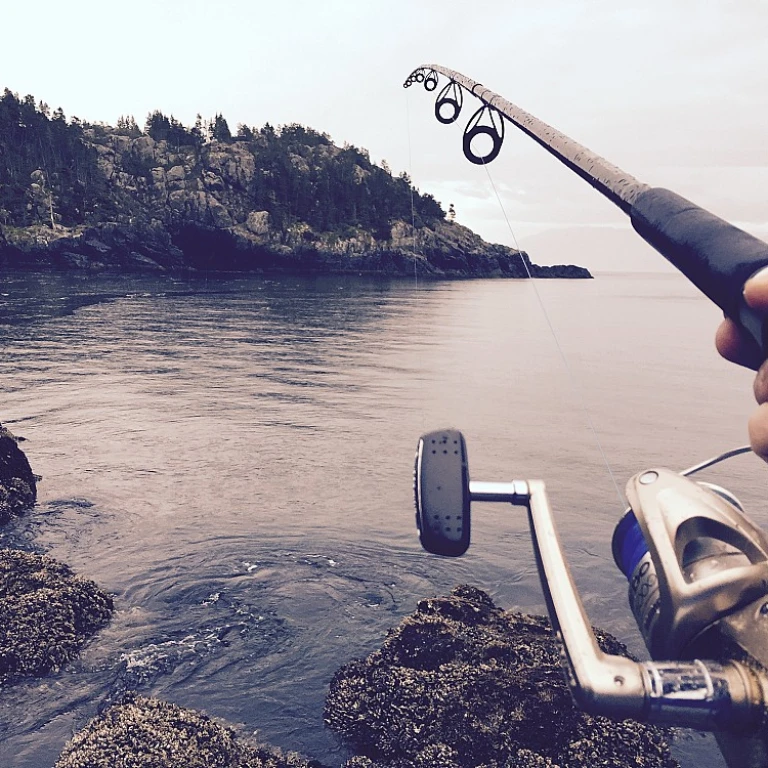
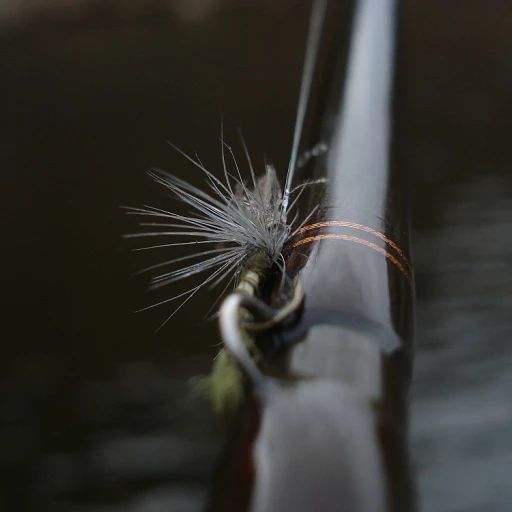
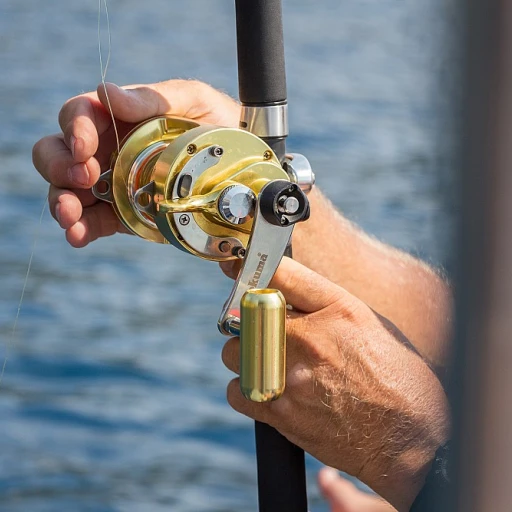
-large-teaser.webp)

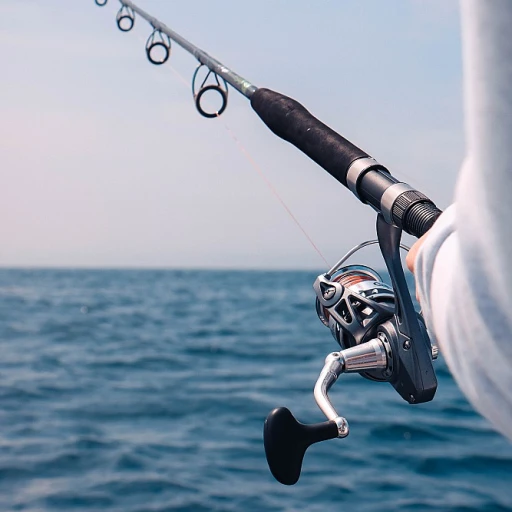
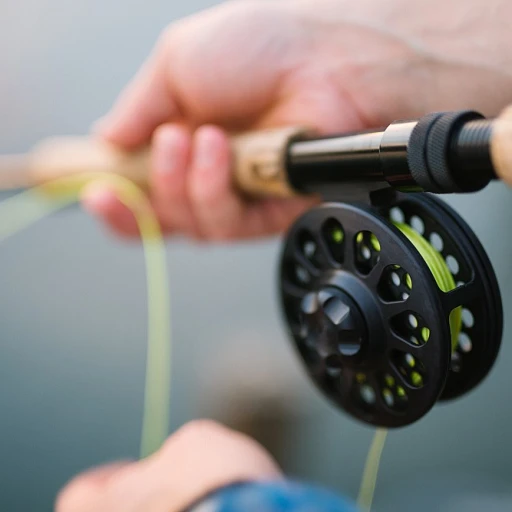
-large-teaser.webp)

-large-teaser.webp)


